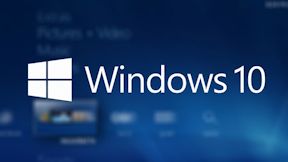|
|
6 Science Fiction-Sounding Google Tools

Sometimes its hard to draw the line between science fiction prescience and self-fulfilling prophecy. Did clamshell phones look like Star Trek communicators because the series was spookily accurate, or because the kind of people who wound up designing phones grew up on science fiction? In a world that now contains self-driving cars, augmented reality headsets, and remote drones, it seems a question worth asking.
But in some ways, of course, the future is already here. Nowhere is that truer than Google. In addition to Google Glass and the companys ventures into fullblown VR,though, there are some Google future tools you can use at home.
1: Handsfree Search
Typing isnt very sci fi. You should be able to talk to your computer – in a way thats actually constructive, not just hiss at it when it wont do what you want. And now, with Googles voice search, you can. In the search bar, theres a little microphone symbol on the right hand side. Click on that and you can tell the computer what to bring you as you fumble your blaster into its holster.
2: Google Maps Time Machine
Google Maps Location History feature lets you retrace your own steps through your day. OK, its less like an actual time machine, and a little more like stalking yourself from a satellite. But it is pretty futuristic.
3: Explore the Universe
Google Maps is pretty cool, even though, in the time-honored way that yesterdays stunning breakthrough becomes todays mundanity, you mostly use it to find the way to places and scope out holiday destinations when youre meant to be working. But Google Sky is cooler, though its not yet possible to vacation there (I hear Google have people working on it). Google Sky maps the universe: stars, constellations and galaxies are all there, as well as detailed surface maps of Mars and the Moon.
4: Quantify Your Browsing
Do you wonder how much time you actually spend on the different activities you use the web for? Well, Google lets you quantify and graph that, so you can recoil in horror at the time spent on Maps and then go plana vacation to make yourself feel better. You can only do it in Chrome, via an extension called Chrome Visual History. Unlike Sky,which doesnt have much practical purpose, you can actually use this to understand what your online behavior is really like: a built in, easily understood activity monitor.
5: Send Links to Your Friends via Soundwaves
Google Tone lets you communicate with others via soundwaves. You click on the speaker button in the top corner of your browser and a series of unique sound patterns transmit your information to their device. You can use this even when the other person is out of earshot – or out of state. Simply play the sound at them down the phone in a Hangout (probably works fine over Skype too).
6: Turn A Mobile Device into a Desktop
You can access your home desktop via your mobile with Chromes Remote Desktop extension and mobile app. Trackpad is replaced by touchscreen, but your desktop is the way you left it.
Top ↑
|
7 ways to Find Anyone’s Email Address (Relatively) Easily

Knowing who you want to contact isn’t always the same thing as having the right email address. In sales, people often forget to ask for email addresses. I know, but it’s true. And while they’re less disposable than they used to be people do change emails too. So if you have a lot to say, and someone to say it to, but no way to reach that person, here’s how it’s done.
1: Datanyze Insider
Datanyze’s Firefox or Chrome browser plugin lets you look up anyone’s email address by searching for, finding and highlighting someone’s name wherever it appears online. Then it pings all the email addresses it can find for that person, figures out which one is active and shows you a link to the right address.
2: Email Hunter
Sounds like a very dull action film. Actually, it’s an app that lets you find people’s email addresses from their company domain. To find someone’s email, simply type any company name into Email Hunter and the site will show you every (publicly available) email associated with that domain. If you’re planning on searching up to 250 domains monthly, it’s free; to search more, plans start at $49 per month.
3: Voila Norbert
Norbert is fast and simple to use, with no plugin to install, but it does have its limitations. It doesn’t check for catch-all email addresses, it limits the number of queries you make, and as a result, it can be less accurate and comprehensive than some other solutions in this list. But it’s worth mentioning, because sometimes it will turn up results other tools miss.
4: EmailBreaker
EmailBreaker offers a database of the email formats of companies and corporations. The advantage? You can search by company name, industry or geographical area. EmailBreaker can find the pattern your target company uses across their company emails.
5: Email for Corporations
Email for corporations does a similar job to EmailBreaker. However, Email for Corporations is EmailBreaker’s staider big brother; more oriented toward established enterprises, it hasn’t added a new company to its lists since 2011.
6: CEO Email Address
CEO EmailAddress does what it sounds like it does; it helps put you in touch with CEOs all over the world.
7: LinkedIn Connections
Strictly speaking, LinkedIn isn’t a tool for discovering email addresses. But many of us have LinkedIn contacts that we don’t have email addresses for. If only there was some way to link up your LinkedIn contacts to your Google Contacts list. Turns out, there is, and it’s built into LinkedIn. You just have to know where to look for it. Under Advanced Settings, you’ll find an ‘export LinkedIn connections’ tab. Select that to get an up-to-date email address in your inbox.
Top ↑
|
How to Maximize Your Results on Social Media

Social media is an indispensable outlet for content marketing and customer engagement. But it’s also notoriously difficult to measure ROI and can be a massive time suck too. What’s needed is a clear idea of how to get the most out of social media while avoiding the pitfalls.
It’s not just coming up with content, though that’s challenge enough for many business owners and managers. It’s about when to post, how much to post and even what channels to use, to get the maximum effect. What about post length?Graphics or no graphics? What about video? Relax: it’s all here.
1: What’s it for?
Why bother with social media at all? Fair question. If it’s difficult and time consuming, what’s the point? The point is lead generation. Social media has, on average, a 100% greater lead-to-close rate than outbound marketing (Hubspot, 2015).Companies that use social media have better customer satisfaction, lower marketing costs, and more leads (Business2Community.com, 2014). So social media makes sense. We use it, because it works.
Ideally, your social media content pulls people through to your blog or better yet, your landing page. But that doesn’t always happen. And just because people are with you on Facebook but not visiting your website yet doesn’t mean time spent talking to them is time wasted.You’re working on brand identity and awareness and customer engagement – even before those people become your customers. (And bear in mind: plenty of your social media followers are customers already, and building a place for them in your brand culture makes them more likely to repeat.)
2: When to post?
Posting to social media shouldn’t be something you do when you can find the time. It should be done at the right time to maximise the engagement you get from that post. Some businesses will have unusual ‘primetimes’ – if you sell insomnia aids you might have a peak at 3AM, if you sell night fishing supplies you might get more engagement in the evening than average. But for the majority of businesses, these are the best times:
- Facebook: between 1PM and 4PM on weekdays. The absolute peak is Wednesday at 3PM.
- Twitter: Monday to Thursday from 9AM to 3PM. Peaks at Monday-Thursday 1-3PM.
- LinkedIn: Tuesday to Thursday; peaks at noon and 4-6PM on those days.
- Google+: 9AM to 10AM; peaks at 9AM Wednesday.
3: How often to post?
More isn’t necessarily better., You’re competing for space in feeds governed by algorithms or sheer volume, and no-one likes to be pestered. You want to stand out, not stand on people’s doorsteps. At the same time, you don’t want to miss people you could have reached if you’d done just one more post. So what are the optimal volumes for each channel?
- Facebook: 2 posts a day
- Twitter: 3 tweets a day
- LinkedIn: 1 post a day
- Google+: 3 posts a day
4: What about post length?
Obviously this is governed by rules just as frequency and timing are. We don’t want to put readers to sleep but five words is maybe a bit brusque. So what’sthe right length?
- Facebook: 40 characters
- Tweets: 71 – 100 characters, allowing retweeters to add to the message without editing the original text
- LinkedIn: 16 – 25 words
- Google+: 60 character headlines do best
Social media success is less about pumping out a huge volume of words and more about striking a chord with your audience through timing and volume combined with a feel for communicating with your customers.
Top ↑
|
Windows 10 Productivity Hacks

Windows 10 is Microsoft back on the right track; after the false start of Windows 8, optimized for the touchscreen PC neverlution, the people who brought you the computer have settled down to finally produce the OS that might lure a full quarter of their customer base away from XP. Since it will ship on most new PCs you’ll probably be using it soon if you aren’t already, so you should know how to get the best out of it. And while it’s regarded as a pretty good OS already, there are some hacks that can cut corners and boost your productivity.
1: God Mode
Not quite as good as it sounds, this still allows you quick access to a pile of Windows tricks and features. Here’s how to get it:
Right click on the desktop and select New>Folder. Then,change the name of that folder to:
GodMode.{ED7BA470-8E54-465E-825C-99712043E01C}
The folder icon should change to resemble the Control panel icon and opening the folder should give you access to… well, everything. It is god mode, after all.
2: Keyboard Shortcuts
In addition to the standard selection of shortcuts, `Windows 10 also offers these time-saving beauties:
WINKEY + UP ARROW / WINKEY + DOWN ARROW: lets you snap windows vertically as well as horizontally.
ALT + TAB: switches to most recent window if you hold it; when you let go it takes you to the app.
WINKEY +TAB: New task View opens, and stays open.
3: Virtual Desktops
Virtual Desktop lets you create a copy of your desktop that you can use to run one complete set of apps whilst doing something completely different in another desktop.This can be a handy way to, for instance, separate social media accounts from productivity to minimise while remaining online.
CTRL + D opens a new virtual desktop.If you’ve got more than one open, WINKEY + CTRL + LEFT or RIGHT ARROW moves you between them and when you want to close one, WINKEY + CTRL +F4 will do that. YOu can drag apps between virtual desktops when they’re open by opening Task View and right clicking on the task you want, then dragging it and dropping into the desktop you want.
4: Command Prompt
Command Prompt is indispensable but irritating. Typing out incomprehensible lines from message boards, or the blogs of people who actually understand this stuff, then finding you mistyped a letter… if only you could copy and paste.
Well, now you can.
You can copy and paste right inside command prompt too, with plain ol’ CTRL + C and CTRL + V.
You do have to enable this new feature, though, so to do that, right click the command prompt’s title bar and go to Properties. Open the Experimental tab – new to Windows 10 – and select Enable Experimental Console Features. Then, you’ll need to check the boxes marked Enable new ctrl key shortcuts’ and ‘Extended edit keys,’ then click OK.
Oh,and now your productivity is all revved up and productive, you might want to know: Solitaire’s back too.
Top ↑
|
4 IT Security Hacks That Are So Crazy They Just Might Work

The environment IT security professionals have to work in is like kudzu mixed with the flu. Ranged against a threat that’s pervasive, constantly mutating and aggressive in pursuit of criminal gain, IT security pros have their own increasingly sophisticated software and architecture solutions,threat detection systems, firewalls, and a tape recording that reminds everyone to change their password from ‘password’ sometime soon.
But maybe that very sophistication is blinding us to some counterintuitive hacks that could make our systems safer with minute investments of time and effort and no new hardware or software. Are there really just a few things we could be doing differently that could make a significant difference to our security status?
Check out these IT security MacGyvers that might be the answer you’re looking for:
1: Rename Admins
Rename administrator accounts to something that isn’t ‘Administrator.’ As silly as it sounds – how can changing a name to something more obscure be effective? – it’s based on sound logic. Weak passwords and poor personal security behaviours are the biggest leakers, and hackers know if they have an account name they can go to work cracking it with password guessing. But if they can’t figure out the account name, they don’t know which accounts are privileged and worth attacking.
2: Cut Admins
The fewer privileged accounts there are, the fewer weak points there are. It’s even possible to get rid of all wholesale privileged accounts. When almost all fortune 500 companies face infiltration by hackers and half have faced employee data leaks (BusinessAdministration.com, 2014), it’s significant that security expert Roger Grimes claims that the one he’s sure has never been hacked has no conventional, wholesale admin accounts at all: ‘It’s “least privilege” in action!’ Grimes enthuses (Infoworld, 2012).
3: Non-Default Ports
Automated malware – worms, SSH discoverers, and all the other virally-spreading, self-stoking nasties that steal your data and damage your finances and functionality – are configured to always go for the default port. Use non-default ports and they’ll just run into the wall. This works on actual human hackers too. They don’t bother to work around it – if you’re not using default ports, they’ll just go hack someone who is. It works the same way closing your windows stops you getting burgled, because burglars don’t care about stealing your TV, just a TV. Close your windows and they’ll steal where it’ s less work. Use default ports and hackers will go elsewhere; you’re too much effort.
4: Honeypots
A honeypot is a computer asset that only exists to be attacked. It doesn’t do anything for your comany except provide early warning that your networl is under attack. When you get a touch to the honeypot you know that you can investigate it and protect the rest of your system from the threat. All this requires is to set up the asset and watch it.
Top ↑
|
|






Leave a Reply
Want to join the discussion?Feel free to contribute!